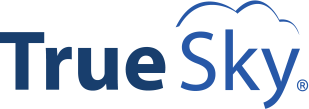4 Budget Forecasting Techniques Your Business May Not Have Tried
In business, knowledge is power. The keys to a successful enterprise rest on the ability to stay agile and be able to make the best decisions in a timely manner. Having the ability to forecast overall income and expense, net profit or loss, overhead cost or the performance of individual functions is a crucial piece of strategic management.
Budgeting and forecasting are vital factors in this decision-making process. Ongoing financial data collection and analysis provides the basis of agility that is fundamental for growing your business.
The ability to forecast is determined by how your budget is set up. Like many things in life, there is more than one way to collect and analyze the financial information necessary to forecast. We’ve put together a list of some of the best business budgeting techniques, to show you how you can effectively forecast the performance of your business.
1. Top-Down Budgeting or Creating a Master Budget to Emphasize Performance Goals
Imagine a pyramid, the highest point of the pyramid (top management) decides on the funding for each department and then creates the forecasts for a specified period of time. Financial data is gathered from each team and management uses past and current information to set the overall budget based on their expectations and performance goals.
2. Bottom-Up Budgeting Allows for More Accuracy
On the other end of the spectrum, bottom-up budgeting allows for department managers to assemble and create their own budget which is then passed along to upper management for approval. Why is this method more accurate? Department managers, of course, have a more intimate understanding of the actual performance and capabilities of their team. Bonus: By giving your managers a say, there is likely to be more buy-in at the departmental level to the forecast and the performance projected therein.
3. Zero-Based Budgeting
The tightest of budgeting ideologies, Zero-Based Budgeting can identify and eliminate waste, since each line is placed under a magnifying glass. Contributors must give each activity a projected expense, regardless if they’ve performed them before or not. Essentially, you are inputting numbers from scratch. Because there is no carryover, everything is rebuilt every year. While the process may seem a tad tedious, the budgets are justified as everything will require an explanation.
4. Monte Carlo Simulations
This methodology calculates the statistical likelihoods of various outcomes from past data and gives your business real numbers to consider when forecasting. You can input different variables to create different scenarios. This can give your company the baseline forecast effectively.
Look Into Creating These 3 Simulations!
a) Initial annual projections you and your team make based on your recent history and anticipated market conditions.
b) Project the impact on business to see where you can make adjustments when there is a:
– Lower amount of sales.
– Higher amount of sales.
c) Project sales, profits and margin changes when prices are:
– Lower than regular price.
– Higher than regular price.
Planning, budgeting and forecasting software can greatly accelerate the task of budget forecasting. True Sky Inc., offers solutions tailored to meet your unique business needs. Contact us today and learn how you can optimize your business.
Join us for a FREE webinar and learn how True Sky can help you master your budget.





